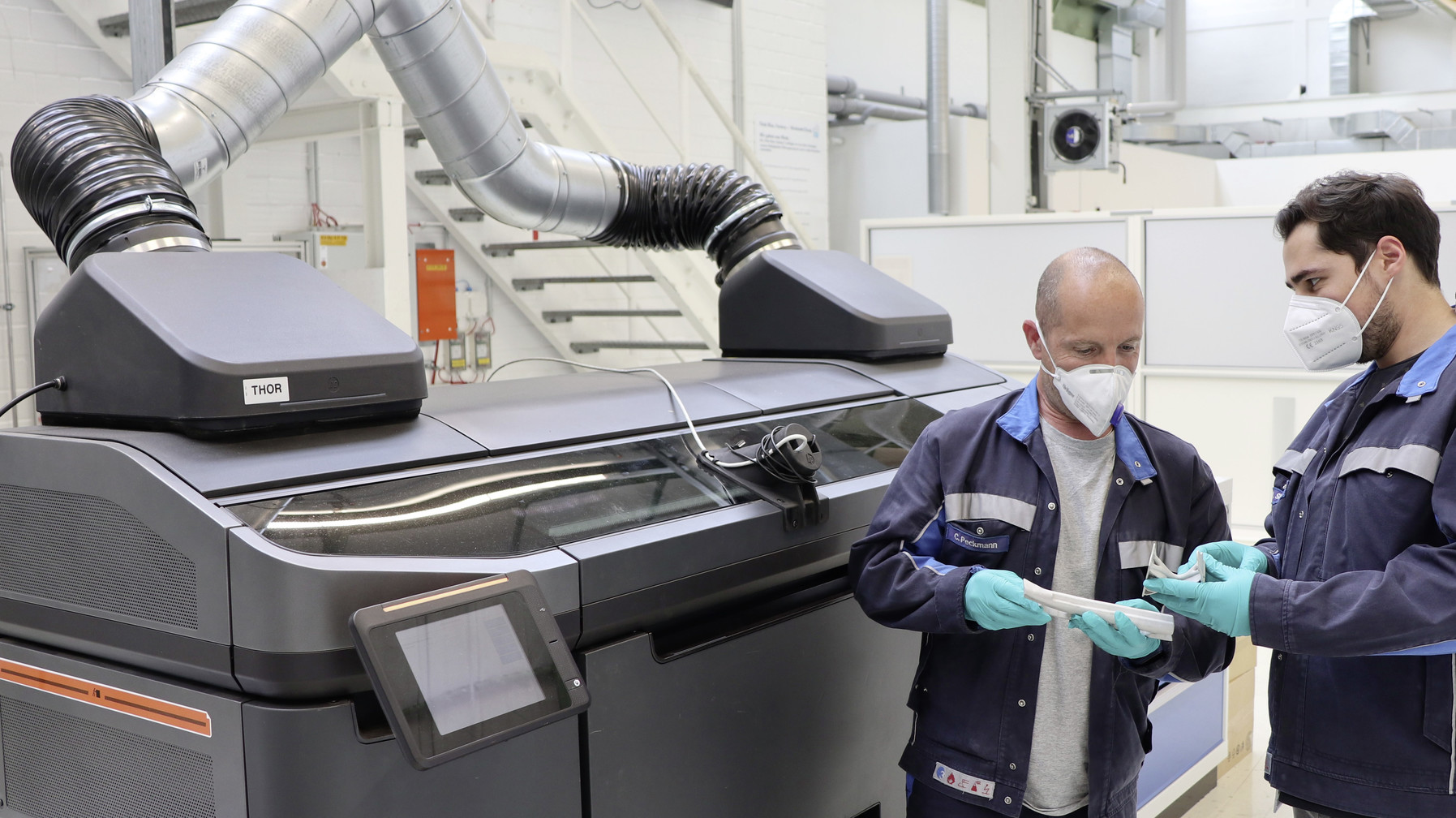Volkswagen is expanding its use of 3D printers in car production, the company announced. For the first time, the newest process – known as binder jetting – is being used to manufacture components at the company’s main plant in Wolfsburg, Germany. Whereas conventional 3D printing uses a laser to build a component layer by layer from metallic powder, the binder jetting process uses an adhesive. The resulting metallic component is then heated and shaped. Using the binder jetting component reduces costs and increases productivity – for example, the components weigh only half as much as those made from sheet steel.
“Despite the ongoing challenges of the coronavirus pandemic, we’re continuing to work on innovation,” says Christian Vollmer, member of the Board of Management of the Volkswagen Brand responsible for Production and Logistics. “Together with our partners, we aim to make 3D printing even more efficient in the years ahead and suitable for production-line use.”
To achieve this advance, Volkswagen has invested an amount in the mid-double-digit million euro range over the past five years, the company said. In addition, the company has entered into a software partnership with Siemens and expanded its existing collaboration with printer manufacturer HP Inc. With the first full-scale use of binder jetting, they intend to acquire important experience and learn, for example, which components can be produced economically and quickly in the future or how additive manufacturing can support the digital transformation of production at Volkswagen, the company said.
HP is providing the printers needed and Siemens the software for additive manufacturing. One key process step that has been worked on jointly by Siemens and VW is optimizing the positioning of components in the build chamber. Known as nesting, this technique makes it possible to produce twice as many parts per print session.
From summer, the three companies intend to establish a joint expert team at the 3D printing center which opened in Wolfsburg at the end of 2018 and enables the manufacture of automotive components using 3D printing. The center also trains employees in the use of these technologies.
By 2025, the aim is to produce up to 100,000 components by 3D printing in Wolfsburg each year. The first components made using the binder jetting process have been submitted for certification: components for the A-pillar of the T-Roc convertible. These weigh almost 50% less than conventional components made from sheet steel.
Volkswagen has already successfully conducted crash tests on 3D-printed metallic vehicle components. Until now, the production of larger volumes was not cost-effective enough. However, the new technology and the collaboration will now make production-line use economically viable, the company said.
